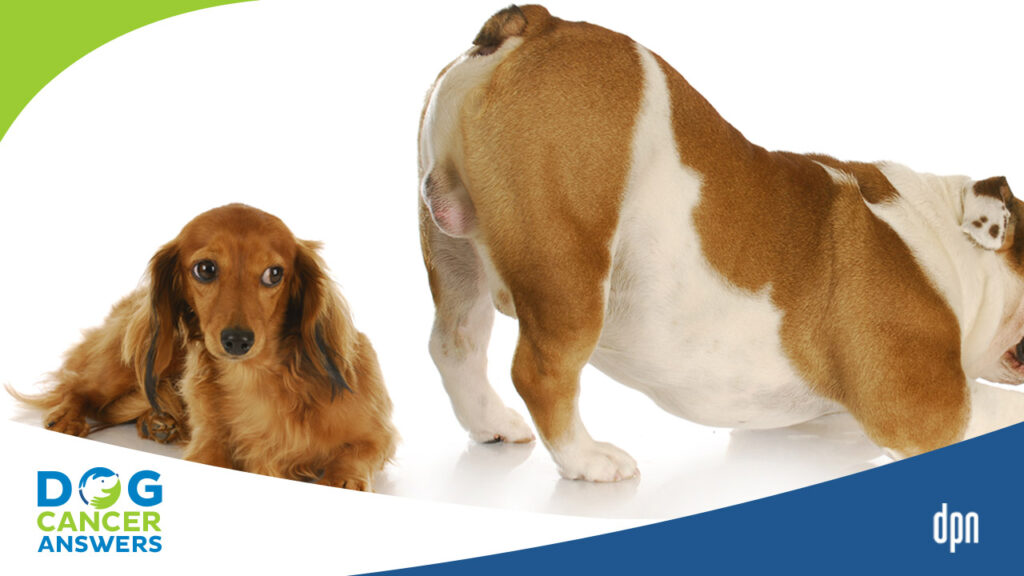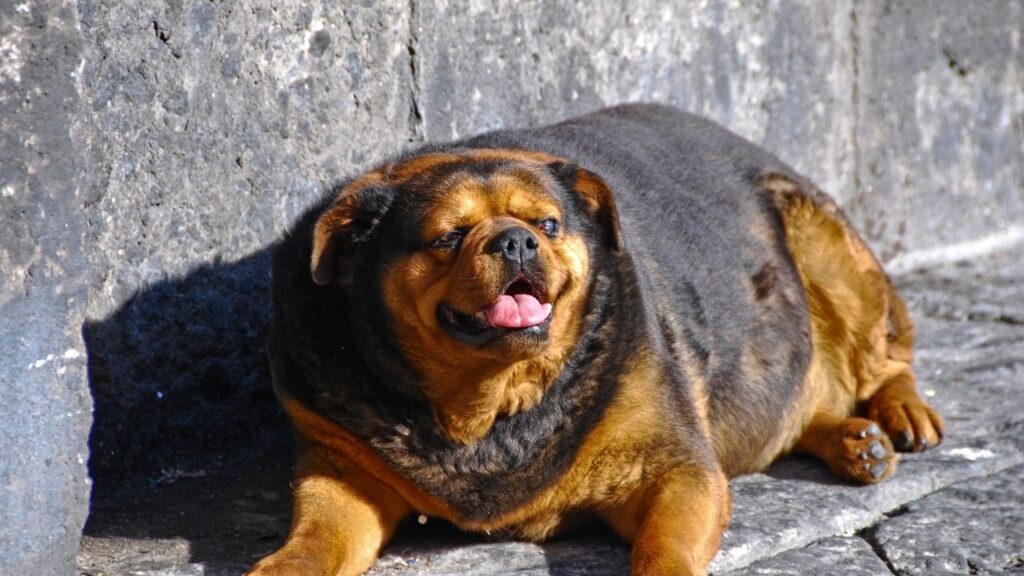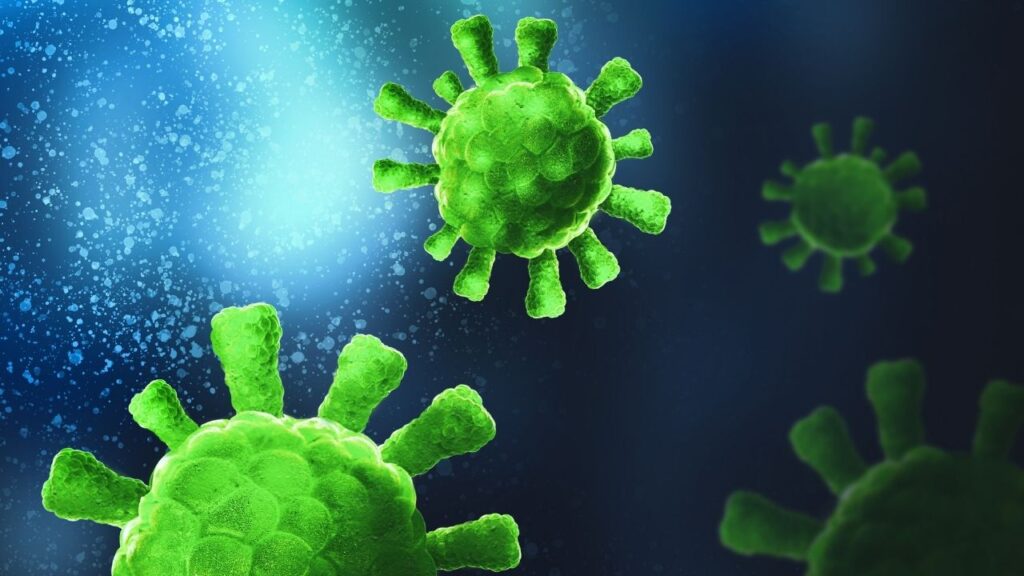Spaying and neutering are the most commonly performed surgeries on dogs in the United States. Yet, there may be reasons not to neuter your dog, or to wait to do it. It is estimated that 85% of dogs in the U.S. have been sterilized. Occasionally the recommendation for those procedures may be based on outdated information about what may be best for the health of an individual dog.
Key Takeaways
- There is no one right answer to the question “is it healthier to not neuter a dog?” Individual characteristics, lifestyles, and health risks will impact what is the best and healthiest choice for YOUR dog.
- You might choose not to neuter a male dog if your dog is at risk for orthopedic disorders or certain cancers.
- If you don’t neuter your male dog, you should be prepared to prevent roaming and siring unplanned litters, and monitor his testicles for changes that could indicate cancer. If you don’t spay your female dog, you should track her heat cycles and prevent access to intact males to prevent unplanned litters, and monitor her mammary glands for signs of cancer. Also know the signs of pyometra and be prepared to act quickly if your intact female seems ill.
One Size Does Not Fit All
While spaying and neutering have been known to improve the lifespan and reduce the incidence of some common reproductive cancers and diseases, these procedures may also be associated with an increased incidence of other forms of cancer and conditions that may affect some dogs more than others.
It turns out that there are some reasons not to neuter your dog, or to delay the procedure.
Spay and neuter recommendations have traditionally been made by veterinarians based on several factors. Those include the reduction in mammary cancer and pyometra in females and the elimination of some prostate conditions like benign prostatic hyperplasia and testicular cancer in males as well as a reduction of harmful male behaviors such as roaming and aggression. Additionally, we can see an increased lifespan and a reduction in unwanted pregnancies which can overwhelm shelters.
However, some of these justifications have conflicting evidence.
Improved Lifespan
Spaying and neutering have been shown to have a significant association with an increased lifespan. In one study involving more than 70,000 dogs, it was found that neutering increased a male dog’s lifespan by 13.8% and increased a female dog’s lifespan by 26.3% and is consistent across different size classes.2,3
Benefits for Females
Intact female dogs are at risk of developing reproductive tract associated diseases such as mammary cancer and pyometra, which can become fatal if not addressed.
Mammary tumors/cancer
In one study, as many as 66% of intact female dogs developed mammary (breast) tumors. Another study found that 50% of these tumors were malignant and led to the death of 30% of intact females. Virtually no cases of mammary cancer developed in dogs spayed early, before the first heat cycle. Some breeds appear to be at a greater risk of developing mammary tumors such as Boxers with a 45% risk and Beagles with a 63% risk.4,5
Pyometra
Pyometra is an infection of the uterus that can make dogs very ill, resulting in death in 7.5% of intact dogs in a recent study. The risk of pyometra has been shown to be as much as 66% in intact female dogs over 9-10 years of age, and some breeds such as Collies, Golden Retrievers, Labrador Retrievers, Rottweilers, and German Shepherds appear to be at greater risk. Spaying is curative and preventative for this condition.2,4

Your veterinarian can help you determine if spaying or neutering is the right choice for your dog.
Benefits for Males
Non-cancer prostate disease
For males, neutering reduces the presence of benign prostatic hyperplasia (excessive growth of the prostate gland) that can affect up to 80% of intact males and predispose them to developing potentially life-threatening diseases such as prostatitis, prostatic abscesses, and infected cysts. Neutering is curative and preventative for this condition.
Testicular cancer
While neutering eliminates the risk of testicular cancer in male dogs, the risk of an intact dog with normally descended testicles developing testicular cancer is low at 1%. Therefore, the risk of testicular cancer in intact dogs might not be a strong determining factor in the decision to neuter.4
Behavioral effects
Behaviors such as roaming and aggression toward other dogs are often seen as a contributing factor for physical trauma or relinquishment to shelters.
While several older studies have shown a drastic reduction of problematic male behaviors like roaming and aggression with neutering2, others have shown a weak association between the two. At this time, more research needs to be performed to adequately determine if there is a significant reduction in potentially harmful behaviors with neutering.4
Population Effects
Perception of the prevention of unintended pregnancies which can contribute to shelter dog overpopulation is often used as a justification for spaying and neutering dogs. But while spaying and neutering will reduce the risk of unintended pregnancies, the effect may not transfer to a reduction of shelter and stray dogs.
Studies in multiple states have found that after providing low-cost spay/neuter clinics, the percentage of sterilized dogs increased dramatically while the shelter intake numbers did not change. The lack of change in shelter population may be due to the large percentage of dogs in the United States who are sterilized and that roughly two thirds of litters are bred intentionally rather than accidentally.
Negative Consequences – Reasons Not to Neuter Your Dog
While there are strong reasons to recommend spaying and neutering dogs, the consequences of a sterilized status can include:2
- Increased risk of developing cancer and dying of cancer
- Increased risk of some orthopedic conditions like cranial cruciate ligament injury, hip and elbow dysplasia
- Increased risk of osteoarthritis (affecting some breeds more than others)
From a database of 40,000 dogs, spayed and neutered dogs were more likely to die of cancer than intact dogs. Lymphoma, osteosarcoma, and mast cell tumors stood out in particular.
While it is important to consider the above factors when deciding whether to spay or neuter a dog, it is worth noting that in a study looking at 35 different breeds, most were unaffected by spay and neuter status or the age at which they were sterilized with regards to cancer development and joint disorder risk.6
Spay/Neuter Effect on Cancer Development
The development of cancer in dogs is a complex process that depends on many different internal and external factors. Spaying and neutering remove the sex hormones estrogen and testosterone from the body, which can affect many different tissues, especially when performed before the dog has fully matured.
In some cases, such as mammary cancer, the removal of these hormones can be beneficial when performed before sexual maturation.
Spaying and neutering are not one-size-fits-all!
Study Limitations
Recommendations for whether and when a dog should be spayed or neutered may depend on many factors including breed and sex. These recommendations are often taken from studies showing associations between the presence of different diseases in sterilized dogs that may or may not be separated by breed.
Since we see differences in the rate of cancer between dog breeds, pooling data from different breeds together may provide a skewed perspective of cancer risk depending on what dogs are included.
A limitation of many of these studies is that they are retrospective, which means they are performed by looking back at a dog’s history through medical records or questionnaires rather than a designed experiment where all other variables are controlled and accounted for. This means that there could be other factors and exposures that may affect an individual dog’s risk of cancer apart from their genetic predisposition.
A limitation of many breed-specific studies is that they are based on a relatively small number of dogs. When a smaller sample size is used, trends and data will be more affected by random variation in individuals that may not be observed in a larger group of dogs.
Finally, most studies about the effect of spaying and neutering on the development of cancer in dogs are performed on data obtained from records from referral hospitals. This may result in cancer types appearing to be more prevalent than they truly are because dogs with conditions that their regular veterinarians can manage will not be seen at a referral hospital, and therefore are not included in the study.1
Timing of Spay or Castration
It is tempting to want to generalize the ideal time to spay or neuter dogs, but there is evidence to suggest that different breeds and sexes may have different ideal sterilization times to reduce the risk of different conditions including cancer and joint disorders.
One of the reasons we observe different disease trends among different dog breeds is due to the genetic component to diseases like cancer. Breed groupings and size both appear to affect the incidence of disease both before and following sterilization.
For example, breeds categorized as “working” or “sporting” breeds by the American Kennel Club7 appear to be at an increased risk of lymphosarcoma, mast cell tumors, hemangiosarcoma, and osteosarcoma. Spayed females seem to be more at risk than neutered males. Breeds in this grouping include the Boxer, Golden Retriever, Vizsla, Labrador Retriever, Cocker Spaniel, and Rottweiler, among others.
Additionally, in some breeds within the “herding” group, such as German Shepherds and Australian Shepherds, and some of the large and giant breeds, spayed and neutered dogs are at an increased risk of osteosarcoma.
Interestingly, neutered males in the “hound” group such as the Afghan Hound, Bassett Hound, Bloodhound, and Borzoi show a reduced risk of osteosarcoma while spayed female dogs appear to be at an increased risk.1
Some cancers, namely mammary cancer, have a strong association between the age at which a dog is spayed and the development of tumors and malignancy. Dogs spayed before the first heat have been shown to have a drastically reduced risk of developing this form of cancer (0.5% risk) compared to dogs spayed after the second estrus or after 2.5 years of age (26% risk). The risk of development of mammary cancer in intact dogs varies from 23-63% and is virtually eliminated when a dog is spayed early.4
Indy the Golden Retriever was part of the Golden Retriever Lifetime Study, bringing us another step closer to solving the cancer puzzle. Learn about how the study hopes to help Goldens with cancer in this episode of Dog Cancer Answers.
Breed-Specific Information
Information about the risk of some different breeds and sexes developing cancer is listed below. While providing more individualized data, the small number of dogs studied for some breeds means that the trends observed may not be seen when a larger group of dogs is studied. Additionally, some breeds have not been studied, so it can be difficult to determine the most effective sterilization times for those breeds. Therefore, breed-specific information can be helpful in guiding spay and neuter decisions but should also be viewed with caution.
Australian Shepherd (440 dogs studied): Spaying after 6 months of age increased the risk of cancer, specifically mammary cancer. Neutered males showed no change in cancer risk above that in intact males.
Bernese Mountain Dogs (235 dogs): Females spayed before 6 months of age had a 2-fold increase in cancer compared to intact females. Males showed no change in cancer risk with neuter status.
Border Collie (399 dogs): Neutered males and females altered between 6-11 months of age have a significantly increased risk of cancer to as much as 13% and 11% by sex, compared to 2% in intact males and none for intact females.
Boston Terrier (291 dogs): Males had significant increase in cancer when neutered before 11 months of age while cancer risk did not appear to be affected by time of spay in females.
Boxer (761 dogs): Neutering before 2 years of age resulted in a significant increase in cancer risk from 17% to 32%. Spayed females also had an increased risk of cancer when altered before 2 years old to 20% compared to the risk of intact females at 11%.
Cocker Spaniel (369 dogs): Females spayed between 1-2 years of age had a significantly increased risk in the amount of mast cell tumor diagnoses at 17% compared to no cases observed in intact females. Neutering time in males was not associated with increased risk.
Collie (116 dogs): An increase of cancer risk to 40% was observed in females spayed before 6 months of age with none seen in intact females. Neutering males was not associated with an increased risk of developing cancer.
Doberman (358 dogs): Neutering males after 1 year of age was associated with an increased risk of cancer but not significantly above levels seen in intact males. Spayed females were not at increased cancer risk.
Golden Retriever (1,247 dogs): Neutering males before 1 year of age showed an increased risk in cancer development but was not significantly elevated from the high risk of cancer seen in intact males (15%). Spaying females after 6 months showed an increased cancer risk 3-4 times the risk in intact females.4,6,8
Irish Wolfhound (86 dogs): Neutering males around 1 year of age had a 25% risk of cancer compared to 8% in intact males. Spaying females did not increase the cancer risk above a high baseline level of 21%.
Rottweiler (683 dogs): Spaying and neutering prior to 1 year of age resulted in a risk of bone cancer more than 3 times that of intact females and more than 4 times that of intact males. This translates to a 25% chance of developing cancer when sterilized before a year of age, particularly for osteosarcoma, compared to intact dogs.9
Standard Poodle (275 dogs): Males neutered at 1 year of age had a significant increase in cancer risk to 27%, all due to lymphosarcoma, compared to a 4% risk in intact males. There was no significant increase in cancer risk with spaying above the 2% risk in intact females.
Shih Tzu (432 dogs): Females spayed between 6-11 months of age had a 7% risk of cancer which increased to 18% when spayed after 1 year compared to no cases of cancer seen in intact females. Neutered males did not have an increased risk of cancer with no cases observed.
Vizsla (2,505 dogs): Spaying and neutering at any age was associated with a significantly increased risk of developing lymphoma, mast cell cancer, hemangiosarcoma, and other cancers combined compared to intact dogs.4,10
The remaining breeds in the study of 35 breeds where spaying/neutering did not appear to increase the risk of cancer: Australian Cattle Dog, Beagle, Bulldog, Cavalier King Charles Spaniel, Chihuahua, Welsh Corgi, Dachshund, English Springer Spaniel, German Shepherd, Great Dane, Jack Russell Terrier, Labrador Retriever, Maltese, Miniature Schnauzer, Pomeranian, Toy Poodle, Miniature Poodle, Pug, Saint Bernard, Shetland Sheepdog, West Highland White Terrier, and Yorkshire Terrier.6
Nationwide is combing through their pet insurance claims to learn about cancer risk. Listen in for popular breeds with the highest and lowest risk in this episode of Dog Cancer Answers.
Types of Procedures
Gonadectomy, or the removal of the reproductive organs, can be done in a few different ways. Procedures for gonadectomies vary by sex and are explained in more detail below.
Spay
Ovariohysterectomy: This procedure is the standard spay method in the United States and involves the removal of the uterus and ovaries. This eliminates the estrus (heat) cycle of the female and her ability to reproduce.
Ovariectomy: This procedure involves removal of just the ovaries while leaving the uterus intact. This procedure is more commonly performed in Europe and is typically performed laparoscopically. This eliminates the estrus (heat) cycle of the female and her ability to reproduce.
Laparoscopic spay: Surgeries performed laparoscopically involve 2-3 smaller incisions used for the insertion of the scope and surgical equipment. During the procedure, the abdomen is filled with carbon dioxide gas to allow for easier visualization of the tissues. The benefits of a laparoscopic spay include a faster and less painful recovery due to the smaller incisions as well as an easier method for removing the uterus and ovaries in overweight or obese dogs. Both ovariohysterectomies and ovariectomies can be performed laparoscopically. While it has benefits, laparoscopic procedures tend to be more costly and less available than traditional open surgical methods.2,14
Ovary-sparing hysterectomy (OSH) or ovary-sparing spay (OSS): This procedure involves the surgical removal of the uterus while leaving the ovaries intact and functional. Since the ovaries are still present, dogs who have had an ovary-sparing spay will still experience the hormonal effects of a heat cycle including an enlarged vulva and willingness to breed even though they are not physically able to become pregnant without the uterus. While the estrus cycle is still present, no bleeding occurs while the dog is in heat since the uterus has been completely removed.11
Benefits of the OSH procedure include a reduction in the risks of cancers associated with traditional spaying as well as a prevention of the spay-associated increased risk of joint disorders and urinary incontinence. However, since this is not a surgical procedure commonly performed in the United States, there is limited research about disease incidence in these dogs.12
The disadvantages of the OSH include the potential for developing mammary and ovarian cancer as well as a “stump” pyometra if glandular uterine tissue is not fully removed.13
Complications of ovariohysterectomies, ovariectomies, and hysterectomies are uncommon but may include:2,14
- anesthetic complications
- bleeding
- poor wound healing (dehiscence)
- infection
- ovarian remnant syndrome, which can result in signs of estrus if there is any ovarian tissue left in the abdomen
Neuter or Castration
Orchiectomy: This procedure involves removal of the testes and prevents males from reproducing.
Pre-scrotal castration: Neutering may be performed by making an incision in the area in front of the scrotum, called a pre-scrotal castration. This procedure has been previously recommended and taught to veterinarians as the preferred method to reduce the risk of complications and self-trauma to the surgical site, despite evidence that it has a slower recovery time than the scrotal approach.
Scrotal castration: The scrotal castration method contrasts with the pre-scrotal method in that the incision is made through the tissue of the scrotum. The surgical site may be closed with suture or left open to heal in juvenile dogs. This method has been found to result in less self-trauma and a 30% faster recovery time.2,15
Complications of an orchiectomy are usually rare and short term and can include:
- anesthetic complications
- swelling
- bleeding
- hematomas
- infection
Vasectomy: A vasectomy can offer an alternative to castration and involves the removal or occlusion of the vas deferens in the scrotum. This prevents the dog from being able to ejaculate sperm while mating. Within 24 hours, sperm are no longer present in the ejaculate.
A benefit of this procedure is the ability to retain the protective aspect of testosterone in the body, while disadvantages can include the risk of developing a “sperm granuloma” from built-up fluid in the epididymis as well as benign prostatic hyperplasia (BPH) and the normally low risk of testicular cancer. If any of these conditions develop, castration should be curative.11
Chemical Castration: Chemical sterilization can be an effective alternative to traditional surgical castration methods and can be performed with three different kinds of chemical agents: hormonal methods, immunocontraceptives, and inorganic chemosterilants.
Hormonal methods can include an implant that is placed subcutaneously under the skin, such as Suprelorin, that releases a hormone called GnRH which blocks testicular function by desensitizing the pituitary gland to the normally stimulating effect of GnRH. This method typically lasts around 6 months.16,17
Immunocontraceptives work by forming antigen-antibody complexes to targets in the testicles to prevent sperm development and maturation. This method is effective as long as there is a sufficient amount of circulating antibody present in the blood stream to bind with its target in the testicle.
Inorganic chemosterilants provide permanent sterilization with an injection into the testicles. There are three different chemicals that can do this. The most commonly utilized is zinc gluconate neutralized by arginine, which was approved by the FDA in 2003 as the product Neutersol, and then later as a similar product, Zeuterin. Another effective chemosterilant is calcium chloride, which has the benefit of a lower risk of severe injection site reactions compared to the other agents. A third effective sterilization agent includes hypertonic saline which is an attractive choice as it is incredibly inexpensive.19
Benefits of using non-surgical, permanent chemosterilants include the prevention of risks associated with surgery and anesthesia as well as being an effective method of population control in some nations with large numbers of stray dogs.18
Disadvantages of using chemosterilants include an increased risk of pain, swelling, and redness of the testicles that can last for 3-5 days, as well as lethargy and diarrhea which are typically temporary.19
Listener Kim calls in with a question about her two-year-old dog’s testicles. They haven’t dropped, and the vet can’t find them. Are dog testicles not dropping a cancer risk? Dr. Trina Hazzah breaks it down in this episode of Dog Cancer Answers.
When Spay or Neuter Decreases Cancer Risk
Spaying and neutering have several benefits for the health and longevity of dogs and can reduce the risk of developing certain cancers.
1. Mammary cancer is one of the most common forms of cancer seen in intact female dogs. Of the mammary cancers diagnosed in intact dogs, approximately 50% are malignant. Spaying before the first heat cycle can greatly reduce the likelihood of developing mammary cancer from 25-63% (varying by breed) to 0.5%, nearly eliminating the risk.
Large breed dogs have a 58% risk of developing malignant mammary cancer, compared with small breed dogs who have a 25% risk of developing malignant mammary cancer. Therefore, the size of a dog should be considered when weighing the decision to spay as larger dogs are at a much greater risk of developing cancer than their smaller counterparts.4,20,21
2. Testicular cancer: Neutering eliminates the risk of testicular cancer in male dogs although this form of cancer is relatively rare and less than 1% of intact male dogs die of testicular cancer. This low death rate is likely due to the high cure rate when neutering is performed after diagnosis.4
3. Perianal cancer: Cancer in the perianal area can include the anal sac glands and the tissue surrounding the anus called hepatoid glands. Tumors in this area can include benign growths called adenomas and malignant cancers called adenocarcinomas. Benign adenomas make up over 80% of the tumors seen in the perianal area and are hormone dependent.
While perianal adenomas are more common in older intact male dogs, they can occasionally occur in younger, neutered, or female dogs as well. In males, treatment for perianal cancer involves removal of the tumor with castration performed at the same time. Removal of the presence of testosterone is often effective at reducing tumor growth and preventing recurrence.22,23
When Intact Reproductive Status Decreases Cancer Risk
While sterilization reduces the incidence of most cancers in the reproductive tract, it can have the effect of increasing the risk of a dog developing other forms of cancer elsewhere in the body.
1. Prostate cancer: Neutering male dogs has been associated with an increased risk of prostate cancer. The prostate is a gland in male dogs that sits at the neck of the urinary bladder and produces fluids found in semen. Symptoms of prostate cancer can include difficulty urinating, blood in the urine, and potentially difficulty defecating. While neutering does appear to increase the risk of developing prostate cancer by 4 times that of intact dogs, it should also be noted that the overall risk of developing prostatic cancer is low at less than 1%.2,24–26
2. Bladder cancer: Spaying and neutering have been shown to result in an increased risk of developing transitional cell carcinoma, a form of bladder cancer, 4 times that of intact dogs. Bladder cancer is generally more common in female dogs, but neutered males appear to have a 3.6 times higher risk of developing transitional cell carcinoma and 3 times the risk of developing any bladder tumor compared to intact dogs.
Bladder cancer makes up 2% of canine cancers and some breeds, such as the Scottish Terrier, appear to be at higher risk compared to mixed breed dogs. Transitional cell carcinoma is generally a high grade and invasive cancer when it develops and results in clinical symptoms such as blood in the urine, difficulty urinating, or increased urinary urgency.10,20,27
3. Osteosarcoma is the most common bone cancer found in dogs and can often be the cause of death for large and giant breed dogs. Osteosarcoma has a poor prognosis once diagnosed and patients have a median survival time of 5-18 months once diagnosed. Symptoms often include limping or pain on the affected limb.4,9
In a study involving 7,021 dogs, those that had undergone spaying or neutering had twice the risk of developing osteosarcoma compared to intact dogs and there did not appear to be a difference in risk with regard to sex. It is important to evaluate both a dog’s breed and body size when assessing the risk of developing bone cancer. Large body size appears to be the strongest predictor of the development of osteosarcoma and some breeds, such as the Rottweiler, tend to be at high risk after spaying and neutering resulting in 3-4 times increased risk compared to intact dogs while others, like the Vizsla and Labrador Retriever, showed no increased risk of osteosarcoma in sterilized dogs.4,28
4. Hemangiosarcoma is a cancer of blood vessel walls that most commonly develops in the spleen and heart and makes up approximately 2% of canine cancers. While the incidence of hemangiosarcoma is low, there appears to be a significant increase in the risk of cancer development in spayed and neutered dogs.
Females appear to be most strongly affected with spayed female dogs having 5 times the risk of developing cardiac hemangiosarcoma and 2.2 times the risk of developing splenic hemangiosarcoma compared to intact females. Neutered males also had a significantly increased risk of hemangiosarcoma compared to intact males and were more likely to be diagnosed with the splenic form of the disease.10,29
Despite the low incidence of hemangiosarcoma in dogs generally, some breeds of dogs such as the Golden Retriever, German Shepherd, Boxer, and Vizsla have already elevated risks for developing hemangiosarcoma that only increase once spayed or neutered. According to the Golden Retriever Club of America, Golden Retrievers have a 1 in 5 lifetime risk of developing hemangiosarcoma.30
5. Lymphoma: Lymphomas are forms of cancer that originate from cells in the immune system called lymphocytes. This type of cancer is relatively common in dogs with roughly 20–100 cases per 100,000 individuals and while it can affect almost every organ, the areas of the body most commonly affected include parts of the lymphatic system such as the lymph nodes, spleen, and bone marrow.31
In a study of over 14,000 pairs of dogs, intact male dogs had the highest risk of developing lymphoma compared to neutered males and both spayed and intact females.4 This contrasts with studies performed with specific breeds such as Vizslas and Golden Retrievers.
In Vizsla dogs, spayed and neutered dogs had over 4 times the risk of developing lymphoma or lymphosarcoma compared to intact dogs, with the highest risk when dogs were altered after 1 year of age. Another study involving Golden Retrievers showed that the risk of lymphosarcoma was 4 times higher in dogs castrated before a year of age compared to intact male dogs while there did not appear to be a change in lymphoma risk with spaying females.32
Additionally, in breeds where more than 1,000 control dogs were available, breeds such as the Bernese Mountain Dog, Boxer, Bullmastiff, Scottish Terrier, and Gordon Setters appeared to have the highest risk of developing lymphoma.33 Differences in the risk of developing lymphoma varies greatly between breeds and neuter status, underscoring the caution advised when looking at data from multiple dog breeds pooled together.
6. Mast cell tumors are a common type of skin tumor seen in dogs with some breeds, like the Boston Terrier, Boxer, Golden Retriever, and Labrador Retriever, particularly affected. Despite mast cell tumors making up a large percentage of canine skin tumors, the incidence of a dog in the general population developing mast cell tumors is low, around 0.1%.4
Even though spayed female dogs are over 4 times more likely to develop mast cell tumors compared to intact females, tumors present in spayed or neutered dogs were less likely to be high grade. An increased risk of mast cell cancer was not noted in neutered males compared to intact male dogs.20
In a study of Golden Retrievers, dogs spayed after 1 year of age had a 5.7% risk of developing mast cell tumors where the incidence was 0 in intact females. Dogs spayed before 1 year of age had a 2.3% chance of developing mast cell tumors.8
The right choice for you and your dog may not be the right choice for your neighbor and their dog, and that is perfectly ok.
Other Diseases Protected by Intact Status
In addition to some forms of cancer, spaying and neutering may worsen the risk of a dog developing several other diseases such as orthopedic or joint disorders, urinary incontinence, and immune-mediated disease.
Orthopedic Disorders
Some orthopedic conditions such as cranial cruciate ligament (CCL) injury, hip and elbow dysplasia, as well as osteoarthritis generally have been shown to occur more frequently in spayed and neutered dogs with some differences in breed and sex.
CCL injury is the most commonly reported joint disorder with an increased risk in sterilized dogs. Some breeds such as the Golden and Labrador Retrievers and German Shepherd Dog appear to be at particular risk, especially for those dogs spayed and neutered before six months of age.2
In some studies, such as one conducted with Golden Retrievers, neutered male dogs had an increased risk of hip dysplasia double that of intact males while spayed females did not have an increased risk. This contrasts with findings from Labrador Retrievers, where females had an increased risk of developing hip dysplasia when spayed before a year of age while neutering status in males did not appear to have an impact on the development of hip dysplasia.
Dog breeds of large stature in the working, sporting, and herding groups have an increased risk of elbow and hip dysplasia which may be increased after spaying or neutering, leading to the conclusion that sterilization may worsen the risk of developing orthopedic disease in dogs who already have a susceptibility.1,4,8,25,34
Urinary Incontinence
There is evidence from multiple studies showing that spayed females appear to have an increased risk of developing urinary incontinence compared to intact female dogs. Spayed females have a 20% risk of developing urinary incontinence, a risk that tends to worsen with increasing body size. The association between spay status and urinary incontinence appears to be sex-specific as neutering does not result in an increase in incontinence issues in male dogs.2
Immune-mediated Disorders
Immune-mediated disorders occur due to a dysregulation of the immune system, often causing it to attack the body’s own cells unnecessarily.
The risk of multiple immune-mediated conditions appears to increase after both spaying and neutering dogs, including immune-mediated hemolytic anemia (IMHA), atopic dermatitis, hypothyroidism, hypoadrenocorticism (Addison’s disease), immune-mediated thrombocytopenia, and inflammatory bowel disease (IBD).
The increased risks for these conditions tended to be present more strongly in spayed females except for immune-mediated hemolytic anemia and Addison’s disease which were more commonly seen in neutered male dogs.1,2,25
Making the Best Decision for You and Your Dog
With the abundance of often-conflicting information available about spaying and neutering dogs, it can be difficult to determine the best option for an individual dog. Therefore, it is important to consider a wide range of factors when deciding whether to spay or neuter, including:
- sex
- breed
- age
- function
- which health issues are the most important to prevent for that breed or mix
Due to the variation in these factors, there is often no clear choice about which option is the best one for an individual. Spaying and neutering are not one-size-fits-all!
For example, the increased risk of orthopedic disease with neutering in some breeds may be more of a concern for veterinarians and dog lovers than preventing testicular cancer (which is relatively rare and easily cured), leading to the decision to not neuter. For another dog, the risk of mammary carcinoma may be high, so spaying early may be the most effective way to virtually eliminate that risk. For dogs in shelter and rescue situations, preventing unplanned litters is often the highest priority.
Thus, it is important for dog lovers to discuss all these factors and their concerns with their veterinarian so they can make an informed choice about what might be right for them. The right choice for you and your dog may not be the right choice for your neighbor and their dog, and that is perfectly ok.
- Oberbauer AM, Belanger JM, Famula TR. A Review of the Impact of Neuter Status on Expression of Inherited Conditions in Dogs. Front Vet Sci. 2019;6:397. doi:10.3389/fvets.2019.00397
- Urfer SR, Kaeberlein M. Desexing Dogs: A Review of the Current Literature. Animals. 2019;9(12):1086. doi:10.3390/ani9121086
- Hoffman JM, Creevy KE, Promislow DEL. Reproductive capability is associated with lifespan and cause of death in companion dogs. PloS One. 2013;8(4):e61082. doi:10.1371/journal.pone.0061082
- Howe LM. Current perspectives on the optimal age to spay/castrate dogs and cats. Vet Med Auckl NZ. 2015;6:171-180. doi:10.2147/VMRR.S53264
- Beaudu-Lange C, Larrat S, Lange E, Lecoq K, Nguyen F. Prevalence of Reproductive Disorders including Mammary Tumors and Associated Mortality in Female Dogs. Vet Sci. 2021;8(9):184. doi:10.3390/vetsci8090184
- Hart BL, Hart LA, Thigpen AP, Willits NH. Assisting Decision-Making on Age of Neutering for 35 Breeds of Dogs: Associated Joint Disorders, Cancers, and Urinary Incontinence. Front Vet Sci. 2020;7:388. doi:10.3389/fvets.2020.00388
- Sep 26 AS, Minutes 2019 | 3. AKC Groups: Sporting, Hound, Working, Terrier, Toy, Non-Sporting, Herding. American Kennel Club. Accessed December 12, 2022. https://www.akc.org/expert-advice/lifestyle/7-akc-dog-breed-groups-explained/
- Hart BL, Hart LA, Thigpen AP, Willits NH. Long-Term Health Effects of Neutering Dogs: Comparison of Labrador Retrievers with Golden Retrievers. Coulombe RA, ed. PLoS ONE. 2014;9(7):e102241. doi:10.1371/journal.pone.0102241
- Cooley DM, Beranek BC, Schlittler DL, Glickman NW, Glickman LT, Waters DJ. Endogenous gonadal hormone exposure and bone sarcoma risk. Cancer Epidemiol Biomark Prev Publ Am Assoc Cancer Res Cosponsored Am Soc Prev Oncol. 2002;11(11):1434-1440.
- Zink MC, Farhoody P, Elser SE, Ruffini LD, Gibbons TA, Rieger RH. Evaluation of the risk and age of onset of cancer and behavioral disorders in gonadectomized Vizslas. J Am Vet Med Assoc. 2014;244(3):309-319. doi:10.2460/javma.244.3.309
- Kutzler MA. Gonad-Sparing Surgical Sterilization in Dogs. Front Vet Sci. 2020;7:342. doi:10.3389/fvets.2020.00342
- Cuddy L. Spay/neuter – what’s the evidence? Accessed December 12, 2022. http://www.veterinaryirelandjournal.com/images/pdf/focus/focus1_jul_2017.pdf
- Mejia S, Duncan C, Iodence A, Monnet E, Wheeler R, Duerr F. Evaluation of completeness of resection of the glandular portion of the uterus with hysterectomy in dogs – A pilot study. Anim Reprod Sci. 2020;219:106527. doi:10.1016/j.anireprosci.2020.106527
- Spaying and neutering. American Veterinary Medical Association. Accessed December 12, 2022. https://www.avma.org/resources/pet-owners/petcare/spaying-and-neutering
- Woodruff K, Rigdon-Brestle K, Bushby PA, Wills R, Huston C. Scrotal castration versus prescrotal castration in dogs. Vet Med. 2015;110(5):131-135.
- Driancourt MA, Briggs JR. Gonadotropin-Releasing Hormone (GnRH) Agonist Implants for Male Dog Fertility Suppression: A Review of Mode of Action, Efficacy, Safety, and Uses. Front Vet Sci. 2020;7:483. doi:10.3389/fvets.2020.00483
- Gfrerer N, Taborsky M, Würbel H. No evidence for detrimental effect of chemical castration on working ability in Swiss military dogs. Appl Anim Behav Sci. 2019;211:84-87. doi:10.1016/j.applanim.2018.10.019
- Silveira VCA, Colla ACN, Mestieri ML de A. Chemical castration of small animals: Where are we? Pubvet. 2021;15(3):1-7. doi:10.31533/pubvet.v15n03a762.1-7
- Terefe DA, Seid AM. Non-surgical castration methods to control stray dog population, a review. J Worlds Poult Res. 2019;9(6):233-240. doi:10.36380/scil.2019.ojafr32
- Bentley A, Thalheim L. CONTROVERSIES IN SPAYING AND NEUTERING: EFFECTS ON CANCER AND OTHER CONDITIONS.
- Gedon J, Wehrend A, Kessler M. Ovariectomy reduces the risk of tumour development and influences the histologic continuum in canine mammary tumours. Vet Comp Oncol. 2022;20(2):476-483. doi:10.1111/vco.12793
- Wilson GP, Hayes HM. Castration for treatment of perianal gland neoplasms in the dog. J Am Vet Med Assoc. 1979;174(12):1301-1303.
- Choi EW. Deep dermal and subcutaneous canine hemangiosarcoma in the perianal area: diagnosis of perianal mass in a dog. BMC Vet Res. 2019;15(1):115. doi:10.1186/s12917-019-1852-6
- Teske E, Naan EC, van Dijk EM, Van Garderen E, Schalken JA. Canine prostate carcinoma: epidemiological evidence of an increased risk in castrated dogs. Mol Cell Endocrinol. 2002;197(1-2):251-255. doi:10.1016/S0303-7207(02)00261-7
- Dickerson V, Grimes J, Wallace M. Understanding Data on Hormones, Behavior, and Neoplasia. Todays Vet Pract.
- Bryan JN, Keeler MR, Henry CJ, Bryan ME, Hahn AW, Caldwell CW. A population study of neutering status as a risk factor for canine prostate cancer. The Prostate. 2007;67(11):1174-1181. doi:10.1002/pros.20590
- Griffin M, Culp W, Rebhun R. Lower Urinary Tract Neoplasia. Vet Sci. 2018;5(4):96. doi:10.3390/vetsci5040096
- Torres de la Riva G, Hart BL, Farver TB, et al. Neutering dogs: effects on joint disorders and cancers in golden retrievers. PloS One. 2013;8(2):e55937. doi:10.1371/journal.pone.0055937
- Robinson KL, Bryan ME, Atkinson ES, Keeler MR, Hahn AW, Bryan JN. Neutering is associated with developing hemangiosarcoma in dogs in the Veterinary Medical Database: An age and time-period matched case-control study (1964-2003). Can Vet J Rev Veterinaire Can. 2020;61(5):499-504.
- Dobson JM. Breed-Predispositions to Cancer in Pedigree Dogs. ISRN Vet Sci. 2013;2013:1-23. doi:10.1155/2013/941275
- Zandvliet M. Canine lymphoma: a review. Vet Q. 2016;36(2):76-104. doi:10.1080/01652176.2016.1152633
- Dickinson RM. Canine lymphosarcoma: overcoming diagnostic obstacles and introduction to the latest diagnostic techniques. Can Vet J Rev Veterinaire Can. 2008;49(3):305-306, 308. doi:10.4141/cjas69-041
- Villamil JA, Henry CJ, Hahn AW, Bryan JN, Tyler JW, Caldwell CW. Hormonal and Sex Impact on the Epidemiology of Canine Lymphoma. J Cancer Epidemiol. 2009;2009:1-7. doi:10.1155/2009/591753
- Kent MS, Burton JH, Dank G, Bannasch DL, Rebhun RB. Association of cancer-related mortality, age and gonadectomy in golden retriever dogs at a veterinary academic center (1989-2016). Bauer JA, ed. PLOS ONE. 2018;13(2):e0192578. doi:10.1371/journal.pone.0192578
Topics
Did You Find This Helpful? Share It with Your Pack!
Use the buttons to share what you learned on social media, download a PDF, print this out, or email it to your veterinarian.









